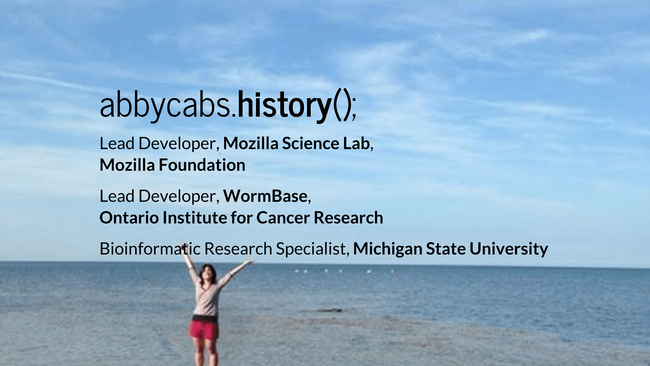How to bring open source to a closed community
This is (roughly) a transcript of my talk at Strange Loop this year! At least, it’s what I meant to say. Watch the video for all the fun Canada facts and nervous rambling.
Slides made using reveal.js. Screenshots captured using Decktape

First off, I want to thank the organizers for this opportunity. Strange Loop is such an amazing conference – I can’t believe I fist attended with an opportunity grant two years ago. The friendships and community I’ve built here have been amazing.
Let’s get started!

Hi, I’m Abby! This is me. I work for the Mozilla Foundation as Lead Developer of Open Source Engagement. This means I with with the open source projects and community around the different programs at the Mozilla Foundation including Open Science, Internet of Things, Women and Web Literacy, Learning and Advocacy.
Also, I’m from Toronto. This is important because Toronto is great.

A...